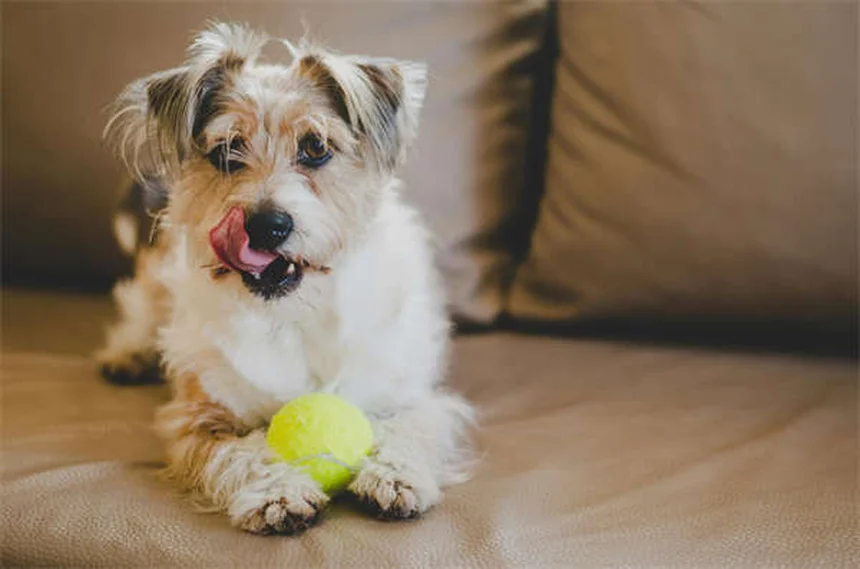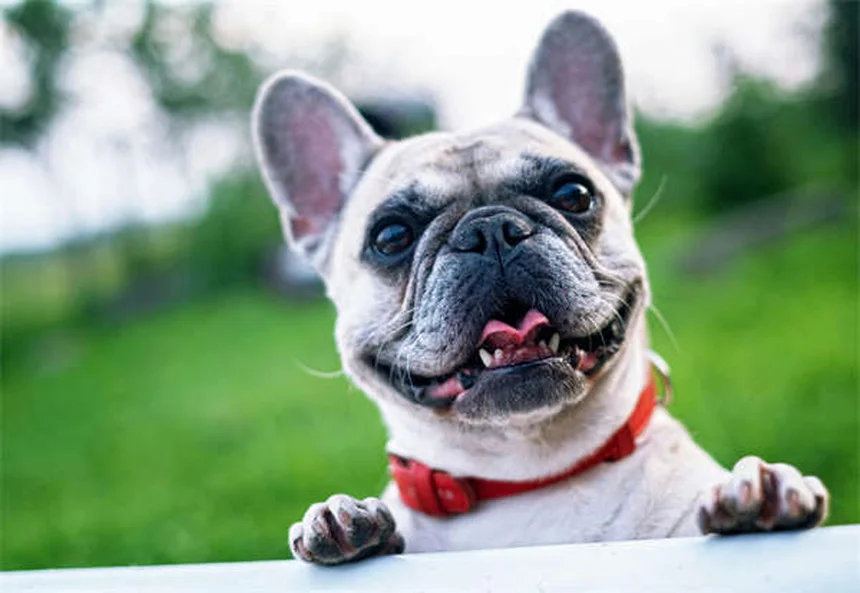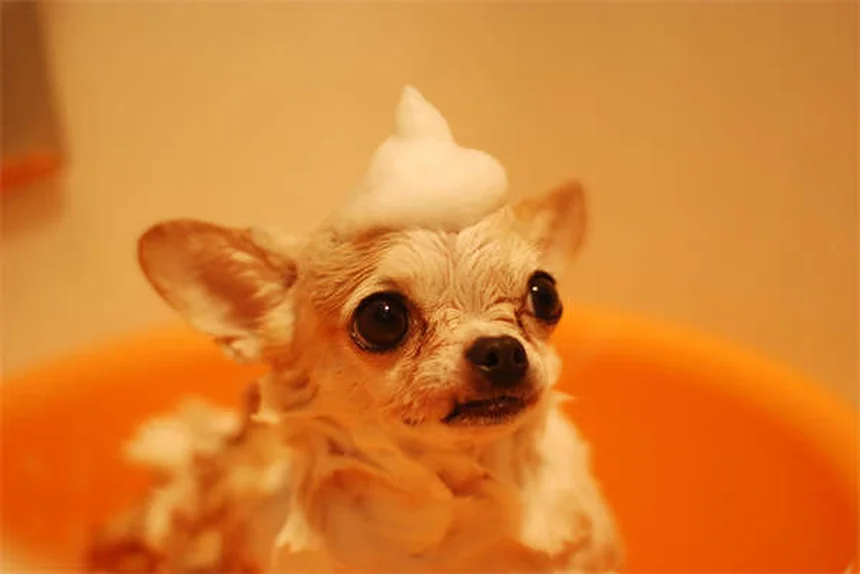Advertisement
Why is my dog not drinking water? The answer is: there are several possible reasons, ranging from simple disinterest to serious health concerns. As a dog owner myself, I know how worrying it can be when Fido suddenly ignores his water bowl. Let me break it down for you - dogs typically need about one ounce of water per pound of body weight daily, but many factors can affect this. Maybe your pup's eating more wet food (which contains water), or perhaps there's an underlying health issue. Whatever the reason, we'll explore all the possibilities together and give you practical solutions to try at home. Just remember - if your dog stops drinking completely or shows other symptoms, it's time to call your vet.
E.g. :Chronic Diarrhea in Dogs: 7 Proven Ways to Stop the Mess
- 1、Is Your Dog Ignoring Their Water Bowl? Let's Figure Out Why
- 2、Common Reasons Dogs Stop Drinking Water
- 3、When Should You Really Worry?
- 4、What Your Vet Will Do
- 5、Home Care Tips While You Wait
- 6、FAQs From Concerned Dog Parents
- 7、Final Thoughts From One Dog Lover to Another
- 8、Beyond the Water Bowl: Exploring Canine Hydration Habits
- 9、The Psychology Behind Canine Drinking Behavior
- 10、Creative Hydration Solutions That Actually Work
- 11、Understanding Breed-Specific Hydration Needs
- 12、The Seasonal Hydration Guide Every Dog Owner Needs
- 13、Hydration Tracking Made Simple
- 14、FAQs
Is Your Dog Ignoring Their Water Bowl? Let's Figure Out Why
The Mystery of the Full Water Bowl
You know that feeling when you walk past your dog's water bowl for the third time today and notice it's still full? That's when the worrying starts. I've been there too - staring at an untouched water bowl like it's some kind of canine Rorschach test.
Dogs usually do a great job regulating their water intake, but sometimes they just stop drinking like they normally would. Maybe they're not acting like their usual tail-wagging selves either. Before you panic, let's walk through the possible reasons together.
How Much Water Should Fido Actually Drink?
Here's a simple rule of thumb: dogs need about one ounce of water per pound of body weight each day. But this isn't set in stone - just like us, their needs change based on activity level, diet, and health status.
Check out this quick reference table:
| Dog's Weight | Daily Water Needs |
|---|---|
| 10 lbs | 10 oz (about 1¼ cups) |
| 30 lbs | 30 oz (nearly 4 cups) |
| 50 lbs | 50 oz (over 6 cups) |
Remember, these are just guidelines. If your dog's been playing fetch in the summer heat, they'll need way more. And certain health conditions like Cushing's disease can make them extra thirsty.
Common Reasons Dogs Stop Drinking Water
 Photos provided by pixabay
Photos provided by pixabay
It Might Be What They're Eating
Did you recently switch from canned food to dry kibble? Canned food is about 70-80% water, while dry food only contains about 10%. That's a huge difference in their daily water intake!
Here's a funny thought - imagine if you ate soup for every meal, then suddenly switched to crackers. You'd probably be glued to the water fountain too!
Could It Be Their Teeth?
Ever had a toothache so bad you didn't want to drink anything? Dogs experience that too. Dental issues can make drinking painful, especially if the water is very cold.
Watch for these signs:- Bad breath (worse than usual dog breath)- Dropping food while eating- Pawing at their mouth
When Their Tummy Hurts
Just like us, dogs lose their appetite (and thirst) when they're nauseous. This could be from eating something they shouldn't have (like that mystery item from the trash can) or more serious conditions like inflammatory bowel disease.
Pro tip: If your dog's not drinking but still eating canned food, they might be getting enough moisture from their meals. But keep a close eye on them!
When Should You Really Worry?
 Photos provided by pixabay
Photos provided by pixabay
It Might Be What They're Eating
Water is life - literally. Without it, dogs can become dangerously dehydrated faster than you'd think. Here are the emergency signs:
- Dry, sticky gums (lift their lip to check)- Sunken-looking eyes- Extreme lethargy (not just their usual naptime laziness)- Skin that stays tented when gently pulled up
Did you know that severe dehydration can be fatal in as little as three to four days? That's why it's crucial to act fast if you notice these symptoms.
What About Older Dogs?
Senior pups with arthritis might avoid drinking simply because it hurts to walk to their water bowl. I've seen this happen - a sweet old lab who would rather stay on his comfy bed than make the painful trip across the kitchen.
Solution? Try placing multiple water bowls around the house, especially near their favorite resting spots. You might be surprised how much this helps!
What Your Vet Will Do
The Detective Work Begins
When you bring your dog in for not drinking, your vet will play detective. They'll likely:
1. Do a thorough physical exam (checking gums, skin elasticity, etc.)2. Run blood tests to check organ function3. Possibly do X-rays or ultrasound4. Check a urine sample
Why all these tests? Because decreased water intake can signal anything from kidney disease to cancer. Better safe than sorry!
 Photos provided by pixabay
Photos provided by pixabay
It Might Be What They're Eating
Depending on what they find, treatment might include:
- Fluid therapy (given under the skin or through an IV)- Medications for nausea or pain- Dental cleaning if needed- Diet changes
Here's a reassuring thought: most dogs bounce back quickly once the underlying issue is addressed. I've seen pups go from lethargic to tail-wagging after just some subcutaneous fluids!
Home Care Tips While You Wait
Making Water More Appealing
If your vet gives the all-clear but your dog's still not drinking enthusiastically, try these tricks:
- Add a splash of low-sodium chicken broth (my dogs go crazy for this)- Try a pet water fountain - the running water often tempts them- Use ice cubes as treats (some dogs love crunching them)- Switch to stainless steel bowls - they stay cleaner than plastic
Ever notice how your dog always wants to drink from your glass? Try offering water in different containers - a wide mug or even a clean bucket might do the trick!
The Clean Bowl Factor
Here's something gross but important - that slimy film in your dog's water bowl? It's called biofilm, and it can make water taste terrible. Would you want to drink from a glass covered in invisible gunk?
Make washing their bowl part of your daily routine. I throw mine in the dishwasher every night - easy peasy!
FAQs From Concerned Dog Parents
"My dog's not drinking but still peeing - what gives?"
Good question! Their body is still trying to eliminate waste, but the urine will be much more concentrated. Think of it like making orange juice - less water means stronger flavor!
This can actually be dangerous long-term, as it puts extra strain on their kidneys. That's why it's important to address decreased water intake quickly.
"Can I syringe water into my dog's mouth?"
Please don't! Forcing water can cause aspiration pneumonia if it goes down the wrong pipe. Instead, try the broth trick or contact your vet for safe alternatives.
Remember that time you accidentally inhaled water at the pool? Yeah, dogs can have that same unpleasant experience - but with potentially serious consequences.
Final Thoughts From One Dog Lover to Another
Trust Your Gut
You know your dog better than anyone. If something feels off about their drinking habits, it's always better to check with your vet. As my grandma used to say, "An ounce of prevention is worth a pound of cure" - and in this case, that ounce might just be water!
Prevention Is Key
Keep those bowls clean, monitor their intake, and don't ignore changes. A healthy, hydrated dog is a happy dog - and that means more tail wags and sloppy kisses for you!
Now if you'll excuse me, all this talk about water has me thirsty. I think I'll go fill up my glass... and check my dog's bowl while I'm at it!
Beyond the Water Bowl: Exploring Canine Hydration Habits
The Hidden Ways Dogs Get Their Water
You might be surprised to learn that drinking from their bowl isn't the only way dogs stay hydrated. Dogs are masters at finding alternative water sources - sometimes in places we'd rather they didn't!
Ever caught your pup lapping up rainwater from the flower pot? Or seen them go to town on that muddy puddle during walks? These sneaky hydration methods can explain why their bowl stays full. I've even had clients whose dogs preferred drinking from the toilet (gross, but true!).
The Temperature Factor You're Not Considering
Here's something most pet parents overlook - water temperature matters more than you think. Dogs prefer cool, fresh water, not the warm, stale stuff that's been sitting out all day.
Think about it - would you rather drink from a warm water bottle or a chilled glass? Exactly! Try adding ice cubes to their bowl during summer months. My golden retriever goes nuts for the "crunchy water" as we call it in our house.
The Psychology Behind Canine Drinking Behavior
Why Location Matters More Than You Think
Did you know your dog's water bowl placement could be the problem? Dogs are creatures of habit with specific preferences about where they drink.
Some dogs don't like drinking near their food (would you want to eat next to your toilet?). Others feel vulnerable drinking in high-traffic areas. Try moving the bowl to different spots - near their bed, by the back door, or in a quiet corner. You might discover your pup has been avoiding their water because of its location all along!
The Social Drinking Aspect of Dogs
Here's a fascinating fact: dogs often mirror our drinking habits. If you're not drinking enough water yourself, your dog might follow your lead without you realizing it.
Try this experiment - every time you get up for a glass of water, check and refresh your dog's bowl too. Make a big show of drinking your water while encouraging them. You'd be amazed how many dogs will join in on the "hydration party"!
Creative Hydration Solutions That Actually Work
Turning Water Into a Game
Who says hydration has to be boring? There are tons of fun ways to encourage your dog to drink more:
- Floating treat toys: Special bowls that make dogs "fish" for their treats in water- Puppy popsicles: Freeze chicken broth with bits of their favorite treats- Sprinkler play: Some dogs drink more when they're playing with water
My neighbor's border collie would only drink if they turned it into a training session - "Take a sip" became his favorite trick, complete with treats as rewards!
The Magic of Multiple Stations
Here's a pro tip from multi-dog households: set up several water stations with different types of containers. Some dogs prefer:
| Bowl Type | Why Dogs Love It |
|---|---|
| Wide ceramic bowls | Don't interfere with whiskers |
| Elevated stands | Easier for large/arthritic dogs |
| Automatic fountains | Fresh running water appeal |
Ever notice how your dog always wants to drink from your coffee mug? There's a reason for that - variety sparks interest!
Understanding Breed-Specific Hydration Needs
Short-Nosed Breeds Have Special Challenges
Bulldogs, pugs, and other flat-faced breeds often struggle with drinking. Their facial structure makes lapping water more difficult - imagine trying to drink with a smashed-in nose!
Special shallow, wide bowls can help these guys. Some owners even use slow-flow water bottles designed for rabbits to prevent messy spills and make drinking easier.
Working Dogs vs. Couch Potatoes
Does your dog's activity level match their water intake? A border collie who herds sheep all day needs way more hydration than a basset hound who specializes in couch cuddles.
Here's a simple test - if your dog's tongue hangs out longer than usual after activity or their gums feel tacky, they probably need more water. My aunt's farm dogs always have access to multiple water troughs - smart thinking for hardworking pups!
The Seasonal Hydration Guide Every Dog Owner Needs
Summer Survival Tips
When temperatures rise, so do hydration risks. Try these summer-specific tricks:
- Freeze watermelon chunks (safe and hydrating treat)- Add water to their kibble and let it soak- Provide shade and cool surfaces to lie on- Walk during cooler parts of the day
Remember that time you saw a dog panting heavily on a hot day? That's their way of cooling down - but it uses up precious body fluids fast!
Winter Water Woes
Cold weather brings its own hydration challenges. Outdoor water bowls freeze, and indoor heating dries out the air. Here's how to combat winter dehydration:
- Use heated bowls for outdoor dogs- Check outdoor water sources frequently- Add warm (not hot) water to meals- Consider a humidifier indoors
Fun fact: Snow isn't a good water substitute - it takes a lot of energy for dogs to melt it in their bodies. Stick to liquid water whenever possible!
Hydration Tracking Made Simple
The Measuring Cup Method
Want to really understand your dog's drinking habits? Try this:
1. Measure how much water you put in the bowl2. Measure what's left after 24 hours3. Track it for a week to establish their baseline
This simple system helped me realize my terrier was drinking way more at night - turns out he just preferred privacy for his water breaks!
Tech Solutions for Modern Pet Parents
For the data-loving dog owners out there, there are now smart water bowls that track:
- Daily intake- Drinking frequency- Preferred drinking times- Even water temperature!
While these gadgets aren't necessary, they can provide peace of mind for anxious pet parents. Though nothing beats good old-fashioned observation and love!
E.g. :Dog Not Drinking Water? Possible Causes and When To Call Your ...
FAQs
Q: How long can a dog safely go without drinking water?
A: Here's the deal - while dogs can technically survive without water for about three to four days, you should never wait that long. I've seen cases where dehydration sets in much faster, especially in smaller breeds or during hot weather. Think about it this way - would you wait days without drinking? Your dog's body works similarly. If your pup hasn't touched their water in 24 hours, it's time to take action. Start by checking for other symptoms like dry gums or lethargy. Try the tricks we mentioned (like adding broth to their water), but if that doesn't work, get to the vet immediately. Remember, severe dehydration can cause permanent organ damage or even be fatal.
Q: My dog isn't drinking but is still eating - should I worry?
A: Great question! Here's what I tell my clients - it depends on what they're eating. If your dog's on canned food (which is about 70-80% water), they might be getting enough hydration from their meals. But if they're eating dry kibble and not drinking, that's a red flag. I had one case where a Labrador stopped drinking but kept eating his kibble - turns out he had a painful bladder infection. The lesson? Always monitor both food and water intake. If the behavior continues more than a day or they show other symptoms like vomiting, don't hesitate to call your vet. Better safe than sorry!
Q: How can I tell if my dog is dehydrated?
A: Let me share some easy ways to check at home. First, gently lift your dog's lip and press on their gums - if it takes more than 2 seconds for the color to return, that's a warning sign. Another test? Pinch the skin between their shoulder blades. In a hydrated dog, it should snap back quickly. You might also notice sunken eyes or extreme lethargy. I remember one golden retriever who came in with "sticky" feeling gums and couldn't even wag his tail - classic dehydration signs. If you see any of these symptoms, don't wait - dehydration can become life-threatening faster than you'd think.
Q: Are there ways to encourage my dog to drink more water?
A: Absolutely! Here are some tricks I've learned over the years that really work. First, try a pet water fountain - many dogs prefer running water (it's why they always try to drink from the faucet!). You can also add a tablespoon of low-sodium chicken broth to their water - just make sure it's onion-free. Another tip? Use ice cubes as treats - some dogs love crunching them. And don't underestimate the power of a clean bowl - wash it daily with soap and hot water. I've had clients swear by switching to stainless steel bowls too. The key is experimenting to see what works for your pup!
Q: Can dental problems cause a dog to stop drinking water?
A: You bet they can! Imagine trying to drink ice water with a toothache - ouch! Dental issues are one of the most common reasons I see for decreased water intake. Watch for signs like bad breath (worse than usual), dropping food, or pawing at their mouth. I treated a poodle once who stopped drinking because of an abscessed tooth - after we fixed it, she was back to her normal water-loving self. If you suspect dental pain, schedule a vet visit. They might recommend a cleaning or tooth extraction. In the meantime, offering room-temperature water might help ease their discomfort.












